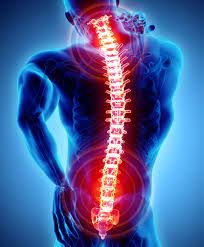Best Spine Surgery Hospital in Jaipur, Spine Doctor & Surgeon in Jaipur
If you've struggled with back pain for any length of time, you may be wondering if spine surgery is your only treatment option. Sometimes, surgery is the only treatment. However, there's good news. The vast majority of back problems can be remedied with non-surgical treatments—often referred to as non-surgical or conservative therapies.
Aging, improper body mechanics, trauma and structural abnormalities can injure your spine, leading to back pain and other symptoms such as leg pain and/or numbness or even leg weakness. Chronic back pain is a condition that generally requires a team of health professionals to diagnose and treat. Before resigning yourself to surgery, consider getting opinions from several spine specialists. This investment of time and information-gathering will help you make an informed treatment decision that will best support your lifestyle and desired level of physical activity.
What about conservative treatment?
As with all non-emergency spinal surgeries, a trial of non-operative treatment, such as physical therapy, pain medication—preferably an anti-inflammatory, or bracing should be observed before surgery is considered. The trial period of conservative treatment varies, but six weeks to six months is the general time frame.
Spine surgery may be recommended if non-surgical treatment such as medications and physical therapy fails to relieve symptoms. Surgery is only considered in cases where the exact source of pain can be determined—such as a herniated disc, scoliosis, or spinal stenosis.
Open surgery vs. minimally invasive surgery
Traditionally, spine surgery is usually performed as open surgery. This entails opening the operative site with a long incision so the surgeon can view and access the spinal anatomy. However, technology has advanced to the point where more spine conditions can be treated with minimally invasive techniques.
Because minimally invasive spine surgery (MISS), does not involve long incisions, open manipulation of the muscles and tissue surrounding the spine is avoided, therefore, leading to shorter operative time. In general, reducing intraoperative (during surgery) manipulation of soft tissues results in less postoperative pain and a faster recovery.
Imaging during spine surgery
Computer-assisted image guidance allows surgeons to view the operative site in far finer clarity than traditional visualization techniques. In addition, implants such as rods or screws can be inserted and positioned with a greater degree of accuracy than is generally achieved with conventional techniques.
In computer-assisted image guidance, images taken preoperatively (before surgery) are merged with images obtained while the patient is in surgery, yielding real-time views of the anatomical position and orientation of the operative site while the patient is undergoing surgery. Preoperative computed tomography (CT) and intraoperative fluoroscopy (real-time x-ray) are generally used, as these enable surgeons to operate with a high level of precision and safety.
Not all patients are appropriate candidates for MISS procedures. There needs to be relative certainty that the same or better results can be achieved through MISS techniques as with an open procedure.
